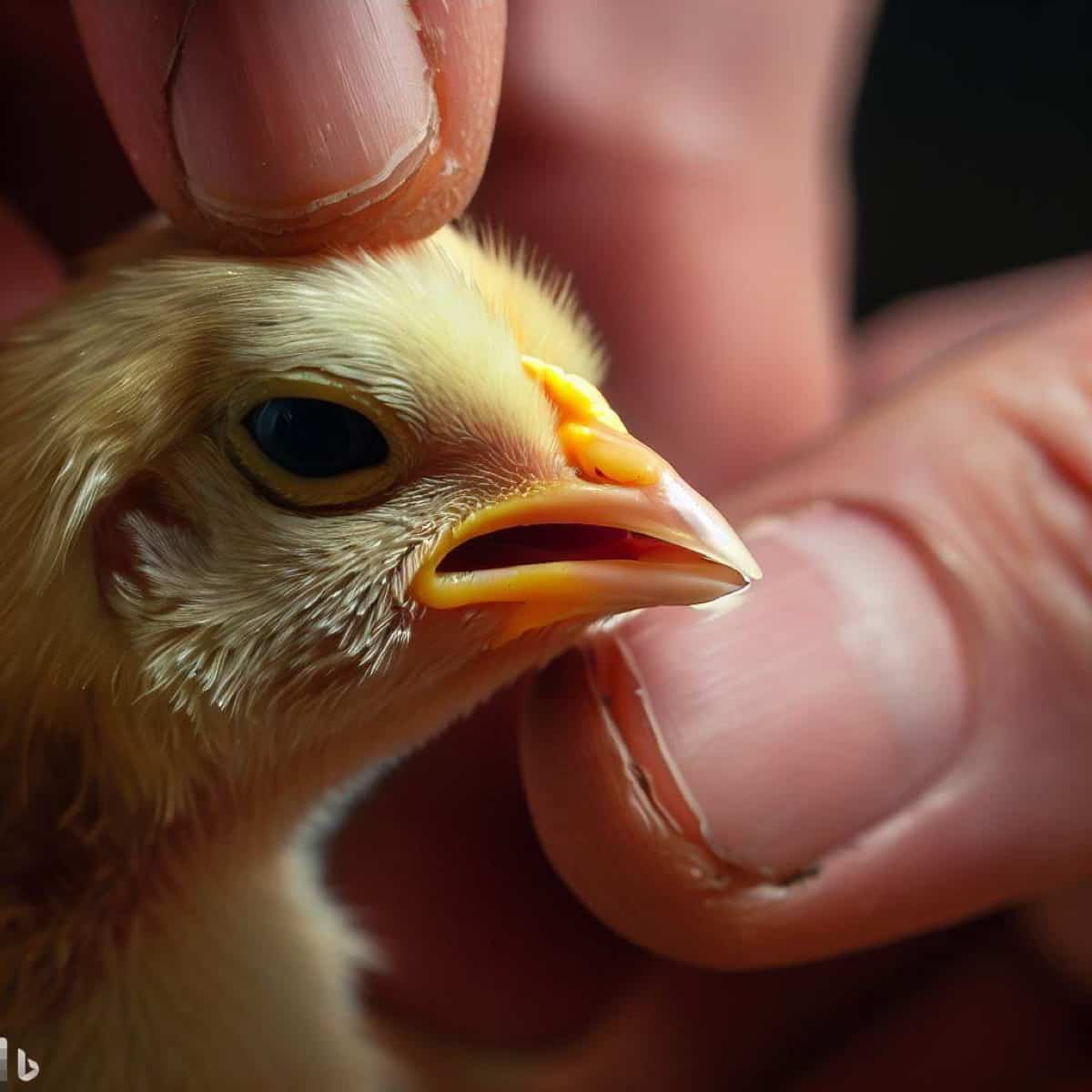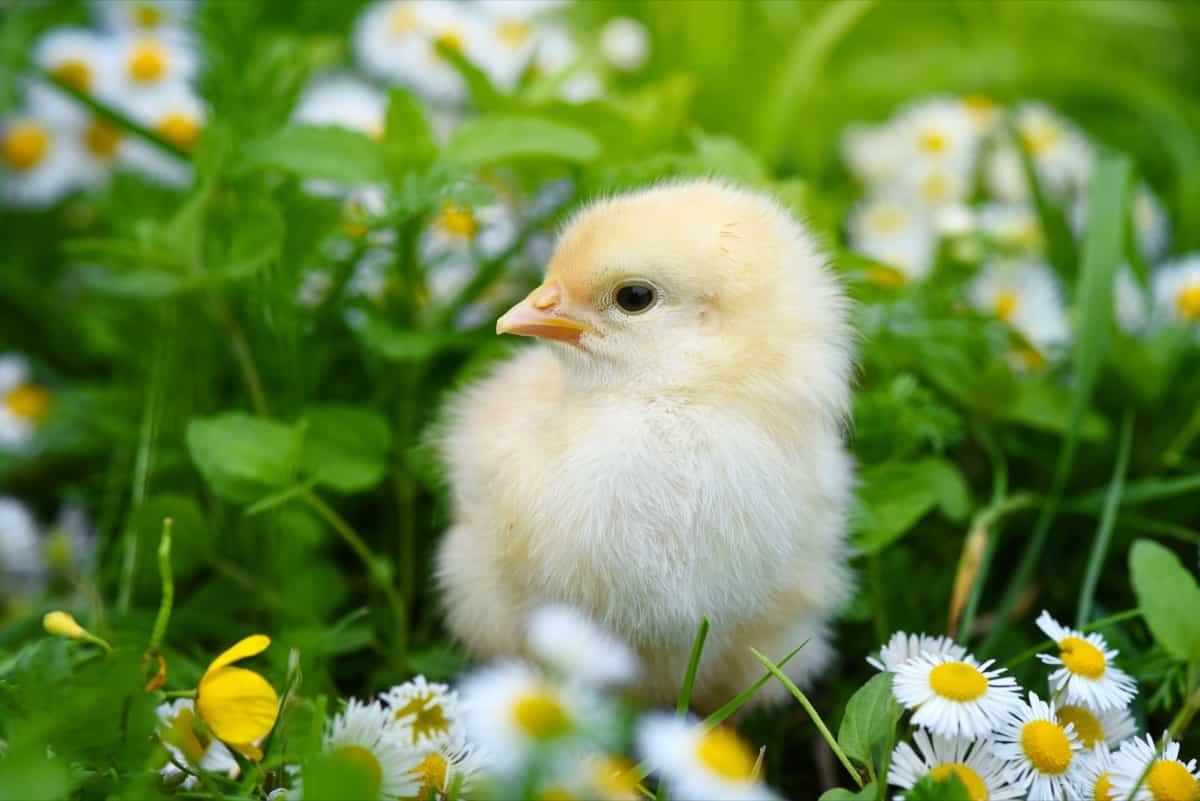Debeaking is a common yet controversial practice in poultry farming aimed at minimizing aggressive behaviors and improving farm productivity. This comprehensive guide explores the methods, benefits, ethical considerations, and much more to give you an in-depth understanding of how to debeak a chicken at home. Let’s proceed.

How to Debeak a Chicken at Home
Understanding the Importance of Debeaking in Poultry Farming
Debeaking is common in poultry farming and is often deemed necessary for various reasons, including reducing aggressive behaviors such as pecking and cannibalism among chickens. What are the benefits of debeaking chickens? They include minimizing injuries within the flock, reducing feed wastage, and ultimately increasing the productivity of a poultry farm.
But, some people don’t like the practice because of ethics. Doing it very carefully and with skill is important. It’s crucial to know the age of chickens for debeaking, as younger ones usually heal quicker. There are different ways to do it, each with good and bad points. Using special tools like a debeaking machine is a must.
Preparing the Necessary Tools and Equipment for Debeaking a Chicken
What equipment is used for debeaking? The most commonly used tools for manual debeaking include specialized scissors or shears. These tools must be sharp to ensure a clean cut and minimize stress and pain for the chicken. Alternatively, more advanced methods involving a debeaking machine can make the process quicker and more uniform. Keeping the equipment clean and sterilized is crucial to prevent infections post-procedure.
Ensuring Proper Restraint and Safety Measures for the Chicken
A second person can hold the bird firmly, or specialized holding equipment can be used to secure the chicken in place. Proper restraint ensures the beak is adequately exposed for the procedure and minimizes movement, which could otherwise result in an imprecise cut or injury. Wearing protective gloves is also recommended for the person handling the chicken.
Step-by-Step Guide to Debeaking a Chicken at Home: Process Explained
Firstly, position the chicken’s head so that the beak is accessible. Utilizing the specialized shears or the debeaking machine, swiftly cut off the tip of the upper beak. Being firm and quick to make the process as stress-free as possible is crucial. Tools used for debeaking should be checked beforehand for sharpness and effectiveness. Immediately after the cut, use a cauterizing agent to prevent bleeding and promote quicker healing. This step is crucial and must not be skipped.
The Different Methods of Debeaking and Their Pros and Cons
The simplest method involves scissors or shears, which are easy to execute but may lack uniformity and precision. Hot-blade debeaking is another popular technique where a heated blade cuts and cauterizes the beak simultaneously. The debeaking machine often utilizes this method. Infrared debeaking is a more modern approach that uses infrared light to remove the beak, but this method often requires specialized equipment and expertise.
Addressing Potential Risks and Complications during the Debeaking Process
Infections are a common concern if proper sterilization measures are not followed. Bleeding can also occur if the cut is not cauterized effectively. Stress and shock to the bird are other issues that can arise if proper restraint and quick execution are not ensured. Therefore, understanding these risks is pivotal for the successful execution of the process and the chicken’s well-being.
Post-Debeaking Care and Management for Chickens
After debeaking, proper care and management are vital to ensure the chicken recovers fully and quickly. To avoid further stress or injury, provide a quiet and stress-free environment for the birds, separated from the rest of the flock. Check for signs of infection or distress daily and offer softer foods that are easy to consume. Pain management can include approved non-prescription pain relievers, usually added to the water supply.
Common Misconceptions and Myths about Debeaking Chickens
Many misconceptions surround the practice of debeaking, including the belief that it’s an entirely pain-free procedure or that it affects the chicken’s ability to eat. Another fallacy is that once debeaked, chickens no longer require special care or attention. Debunking these myths requires educating the public about the advantages of debeaking while emphasizing the importance of ethical practices and post-procedure care.
In case you missed it: 10 Chicken Breeds With Black Meat: Dark Delights

Ethical Considerations and Alternatives to Debeaking in Poultry Farming
Debeaking is often critiqued for being inhumane or causing unnecessary stress and pain to the chicken. Given the ethical debates surrounding the practice, considering alternatives is essential. Environmental enrichment, like providing pecking toys or more space, can sometimes mitigate aggressive behaviors.
Genetic selection for less aggressive traits is another avenue being explored. If you choose to debeak, ensuring the procedure is done as humanely as possible is of utmost importance, considering the age of debeaking chickens and the methods utilized for the best possible outcome.
Consulting with a Veterinarian or Poultry Expert for Professional Guidance
Before undertaking the procedure of debeaking chickens, it’s highly recommended to consult a qualified veterinarian or poultry expert. These professionals can provide vital insights into the most humane methods, best practices, and post-procedure care. They can also guide you on aspects like the appropriate age of debeaking, the pros and cons of using a debeaking machine versus manual tools, and how to minimize risks and complications. The expertise of these professionals is invaluable in ensuring the birds’ well-being and the procedure’s success.
Does Debeaking Hurt Chickens?
There’s a common misconception that debeaking is a painless procedure; however, the truth is that it can cause discomfort and stress for the chicken. The beak contains nerves, and cutting it can result in pain, which is why it’s critical to use quick, precise methods and offer appropriate pain management post-procedure. Consulting with a veterinarian for pain management strategies can make the process more humane and less stressful for the birds.
Age of Debeaking in Poultry
Younger birds often recover more quickly, with less stress and fewer complications. Typically, debeaking is done when chickens are between 10 days and 4 weeks old. However, age can vary depending on the specific needs of the farm and the guidance of a poultry expert or veterinarian. It’s essential to consider the age factor while planning for debeaking to ensure minimal stress and quick bird recovery.
Chicken Debeaking Machine and Price
Debeaking machines offer a quicker and often more uniform method of removing the beak. These machines can either employ a hot blade or use infrared technology. While they can be more expensive upfront, their efficiency often justifies the cost, especially for larger operations. The cost of the machine can differ a lot depending on its type and features. Researching and perhaps consulting a poultry expert is vital to determine which machine will best suit your needs.
Benefits of Chicken Debeaking
The benefits of debeaking in poultry farming are manifold. Reduced aggression among birds minimizes injuries, lowers stress levels within the flock, and decreases mortality rates. This, in turn, enhances productivity and profitability for the farm. Additionally, debeaking can also reduce feed wastage as the birds cannot scoop and scatter feed as easily, which is a factor that can contribute to the long-term sustainability of the poultry operation.
In case you missed it: 10 Most Docile Chicken Breeds: Easy to Handle and Manage in Your Backyard Poultry

Conclusion
Trimming chickens’ beaks, a complicated but sometimes needed process in raising poultry, requires multiple steps. These include seeking specialist advice, grasping moral concerns, selecting the right timing based on the bird’s age, and weighing the pros and cons.
- Feed Your Flock for Less: Top 10 Tips to Save on Chicken Feed
- Ultimate Guide to Ossabaw Island Hog: Breeding, Raising, Diet, and Care
- Hatching Answers: The Top 10 Reasons Your Chickens Aren’t Laying Eggs
- Eggs and Economics: Breaking Down the Cost of Raising Backyard Chickens
- Defend Your Greens: Proven Methods to Keep Iguanas Out of Your Garden
- Ultimate Guide to Cinnamon Queen Chicken: A Comprehensive Guide for Beginners
- Ultimate Guide to California Tan Chicken: Breeding, Raising, Diet, Egg-Production and Care
- Ultimate Guide to Marsh Daisy Chicken: Breeding, Raising, Diet, and Care
- 10 Types of Chicken Farming Businesses You Can Start for Profits
- Comprehensive Guide to American Mammoth Jackstock: Breeding, Care, and History
- 10 Best Quail Types: Top Breeds to Raise for Eggs and Meat
- Cheap Pig Fencing Ideas: DIY Fencing Solutions for Beginners
- Ultimate Guide to Vietnamese Potbelly Pig: Breeding, Raising, Diet, and Care
- Unlocking the Elegance: A Comprehensive Guide to English Fantail Pigeon
- Unlocking Green Profits: Exploring Carbon Market Opportunities for Ranchers
- From Rescue to Weaning: Ultimate Beginners Guide to Raising an Orphan Calf
- Everything You Want to Know About Pioneer’s New Z-Series Soybeans
- Urban Gardening in Grow Bags: Plant in Small Space and Get Big Harvest
- Ram Mandir’s Role in Ayodhya’s Lotus Cultivation Boom for Farmers: From Sacred to Sustainable
- Ultimate Guide: Launching Your Direct-to-Consumer Beef Business Successfully
- Ultimate Guide to Planting Turmeric in Grow Bags
- Ultimate Guide to Planting Dahlias in Grow Bags
- 10 Reasons Why Your Potted Peony is Not Blooming: Treatment and Remedies
- The Ultimate Guide to Calf Buyback Programs: Maximize Your Herd’s Potential
- From Bag to Table: Growing Sweet Potatoes in Grow Bags
- Best Homemade Bug Spray for Strawberry Plants: Recipe and Application
- Top Intercrops for Melia Dubia: Maximizing Yield and Sustainability Malabar Neem
- Boost Your Garden: Top 10 High-Phosphorus Organic Fertilizers for Healthier Plants
- Guide to Andalusian Horse: Breed Overview, Characteristics, Diet, Care, Lifespan, and Price
- 9 Reasons Why Your Hydroponic Plants Are Not Fruiting: Remedies and Treatment
- 10 Reasons Why Your Lantana is Not Blooming: 100% Effective Solutions for Flowering Issues in Lantana Plant
- How to Utilize a Broody Hen for Hatching and Rearing Baby Chickens
- Mericanel Della Brianza Chicken: Profile, Raising, Diet, Egg-production, Price, and Care
- How to Sell Milk Directly to Amul or Mother Dairy: A Beginners Guide
- How to Fix a Muddy Run Chicken Coop: Solutions for a Mud-Free Chicken Run and Coop
- Creative and Practical DIY Chicken Coop Roof Ideas for Every Backyard